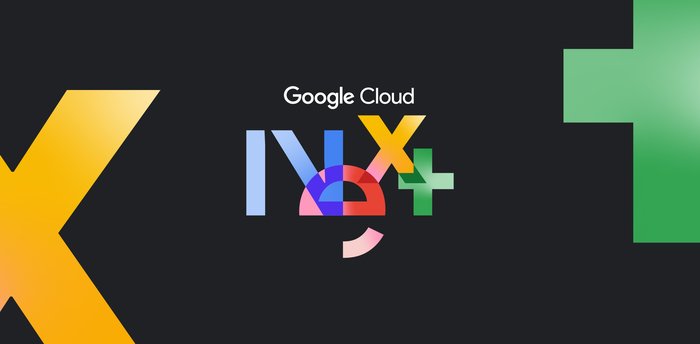Connecting the data: Why leading enterprises are using AI to propel their business

Justyna Bak
Data Strategy and Marketing Lead, Google Cloud
As we look ahead to a new year of continuing disruptions and opportunities, it's important to ask how connected your data is, and how optimized by AI.
Data is at the heart of digital transformation, yet many organizations struggle with exploding volumes of data trapped in different silos and formats across their organization. In a study by HBR, 92% of firms agree that the pace of investment in data and AI is accelerating. However, only 30% of the respondents report having developed a well-articulated data strategy and only 24% say that they considered their organizations to be data-driven as of now.
We are at a tipping point for AI technology maturity, where it can deliver tangible business value in every industry. Today’s data and AI investment decisions will determine who will be the leading organizations of the future. That’s why it’s so important for organizations adopting a data cloud to ensure it not only unifies their data but also provides AI capabilities, so they can unlock the full potential of that data.
By combining data and AI, organizations can provide transformative experiences for customers through modern applications. They can unlock timely insights across various data sources, and enable businesses to act on data-derived decisions to drive impact.
Data-driven organizations can innovate faster
Data leaders are able to adapt quickly when market trends change or unpredictable events occur, such as a global pandemic or economic downturn. Having a better handle on not only the data within your company but beyond — drawing on relevant industry, supply chain, economic, and other competitive intelligence — can have a huge impact on operations and execution, particularly when it comes to being agile during challenging moments.
While it’s true the more you know, the more you can do, there’s also a delicate balance at play — one AI can also help strike. Most organizations often have too much data at times to reasonably manage, which is where AI comes in, to help analyze it all for real, actionable insights.


Look no further than the experience of Home Depot. During the COVID-19 pandemic, this major US-based retailer of home improvement tools and products, had to quickly pivot how they engaged with customers. As many people in the US were under lockdown in the first weeks of the pandemic, the traffic to Home Depot’s website and mobile apps nearly doubled, particularly as the demand for DIY home projects skyrocketed.
In response, Home Depot offered their customers more shopping options digitally combined with physical curbside pickup. Home Depot was dealing with an explosion of interest, and the company had to keep supplies accurate and reliable to provide customers with a seamless experience across digital and physical worlds. Through its fast action, Home Depot was able to grow customer transactions by nearly 20% year over year.
Data and AI investments drive profitability
Investments in data and AI can unlock new revenue streams, reduce operating expenses, and increase overall IT cost transparency.
For example, data scientists can use AI to model customer behavior as part of personalized recommendation engines, which will help drive up conversion rates — first, though, they need access to large amounts of data in an easy, fast and secure way. Organizations have turned to chat and voice AI, such as Google Cloud’s CCAI, which can manage up to 28% more chat conversations concurrently with the same level of call center staff. Smart chat can deliver not only improved customer experience by reducing wait times, it also makes the call center employees more productive. AI can even optimize IT infrastructure operations by recommending the deletion of idle resources, cutting down on unnecessary overhead.
Ulta Beauty, a U.S. retailer of beauty products, has always been on the cutting edge of technology over its two-decade quest to reinvent beauty retail. Makeup, hair, and fashion have always been highly personal purchases, so the ability to combine data and AI to delight customers with new products, offers, and experiences has become a natural fit for Ulta Beauty.


The company’s Virtual Beauty Advisor is a striking example, providing shoppers with an interactive shopping experience built on years of past purchases and preferences to deliver expert recommendations. The tool is continuously learning the typical customer’s buying process, helping them navigate Ulta’s vast assortment both in-store and online. Such a personalized touch has not only increased sales, it’s also helped drive down costly returns.
Ulta also developed GLAMLab, a virtual try-on experience that allows shoppers at home to see how different shades and types of makeup will look on them using augmented reality. Such tools help address one of the biggest obstacles for online beauty sales while providing long-term data for continued brand affinity.
Building a unified data and AI cloud
The companies succeeding with data and AI are deploying them in four key areas: applications, analytics, visualizations, and predictions. The foundation for these capabilities is your IT architecture, which needs to support and integrate a number of domains.
- Databases: build global, responsive, and interactive applications that delight your users
- Data analytics: unlock all the insights from all the data with the freshest analytics
- Business intelligence: democratize access to insights through visualizations, and prescriptive user interfaces
- Artificial intelligence: use patterns to predict outcomes, optimize business operations, automate routine tasks, and create compelling customer experiences
By having these critical capabilities at their disposal, data leaders can accelerate their most strategic business objectives. Developers can build innovative applications with transformative and open databases, while business leaders can identify opportunities for boosting revenue by knowing their customers’ preferences and creating personalized offerings. Employees of data-driven organizations are more productive as they can easily access insights crucial to role-specific needs. Finally, AI-powered systems generate high-quality insights to power the virtuous data to AI cycle.
Today’s data and AI decisions will determine future leaders
Companies have always sought efficiency and agility, needs that have reached new heights amidst the disruptions of the past few years. Organizations are looking to quickly pivot to new tools and platforms to help cope, and they’ll need a cloud that can expand and adapt in the same way. Most every organization has accelerated their digital transformations; those who have embraced their digital side have hardly looked back to the pre-pandemic way of running their businesses.
As we reflect on another year of disruption and opportunity — with another year on the horizon with as much promise for the prepared, and peril for those who are not — taking stock of your data and AI progress has rarely been so important. Now is the time to evaluate your current solutions. Here are some important points to consider:
- Are you effectively using data and AI to fasttrack your strategic business objectives?
- Is your current data cloud solution open and extensible?
- Does it allow multi-cloud scenarios?
- Does it support all your data people, including developers, analysts and business users?
- Is AI an integral part of your data cloud stack?
- Can you analyze all your data sets regardless of format, size and location?
- Can you build AI powered applications?
If the answer to any of these questions is ‘no’, consider reading our research paper, Why Google Data Cloud?, to learn more about how your organization can accelerate its journey to data and AI leadership.
As we reflect on another year of disruption and opportunity, taking stock of your data and AI progress has rarely been so important.
Looking for more from your data and the cloud? Here's Google Cloud's top 10 cloud predictions:





